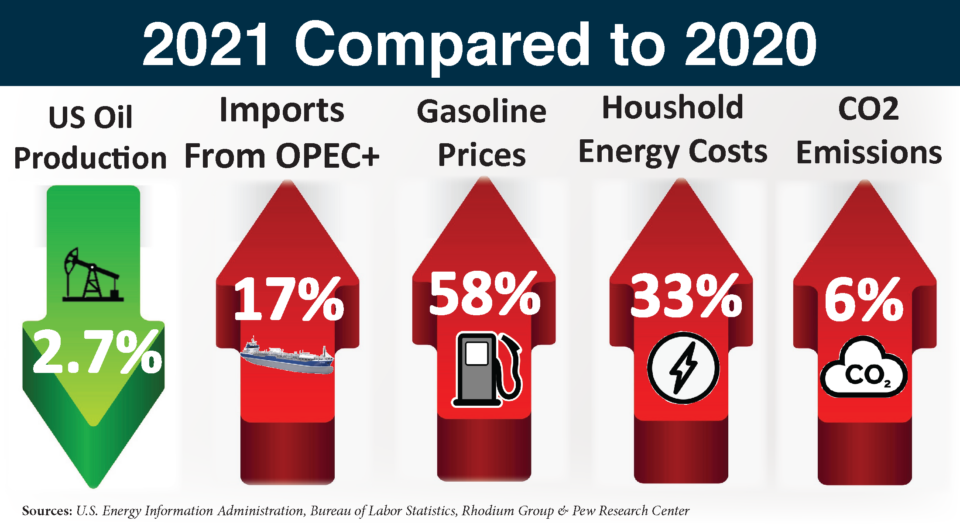Importance of Affordable, Reliable Energy Cannot Be Overstated
Affordable, reliable energy. It’s something we all depend on. And it’s something most Americans have probably gotten used to taking for granted. That was especially true from about 2009 to 2019, as record U.S. oil and natural gas production led to energy costs dropping sharply at the same time food, education and healthcare costs soared.
But that changed in a big way last year, as policies aimed at decreasing traditional American energy production and distribution contributed to energy costs soaring more than 33 percent.
As a result, two in 10 American households couldn’t pay at least one monthly energy bill in full. Another 18 percent kept the temperature in their home at an unhealthy or unsafe level. And more than a quarter of Americans sacrificed food or medicine in order to pay an energy bill.
These are disturbing and potentially deadly trends during frigid winter months for the more than 1 ½ million Illinoisans living below the poverty line who were already spending about a quarter of their income on energy costs before prices spiked last year. One in three U.S. households were already struggling with household energy insecurity, meaning that although they have adequate access to energy, they oftentimes can’t afford it.
The fact that household energy insecurity is now sharply trending in the wrong direction shows that although policies aimed at addressing climate change are well-intended, their unintended side effects could be more damaging than the issues they are intended to address. The myth that weather-dependent energy sources such as wind and solar are cheaper for consumers is being thoroughly debunked in real-time. Since wind and solar are intermittent energy sources, they require almost 100 percent redundant traditional energy backup and expensive storage to be even remotely reliable. The added expense is passed on to consumers. If you are skeptical, check out energy costs in “green” Germany.
Germany’s retail electricity costs were already nearly three times higher than the United States’ before Europe’s current energy crisis began, with half of the average German electricity bill comprised of taxes, levies and charges to pay for renewable energy build-out known as “Energiewende.” Reuters recently reported that a soon-to-be-released government audit finds Germany’s renewable energy transition “has left Germany with Europe’s highest retail electricity prices and at risk of grid blackouts.”
But the worst may be yet to come.
Germany and the rest of the European Union is currently dangerously dependent on Russia for its oil and natural gas needs and these countries are paying unprecedented prices as a result. Natural gas prices are about five to 10 times higher in Europe than they are here. In absence of access to adequate natural gas and wind generation, so-called “green” European countries are even burning record amounts of coal, laying to waste the greenhouse gas reduction ambitions that were the justification for their unrealistic “green” policies in the first place.
It boils down to this: In the real world, access to affordable, reliable energy is a far bigger priority than idealistically driven renewable energy campaigns that deliver neither. Not only will the so-called “energy transition” – which is essentially a transition from a hydrocarbon-fuel energy system to a metal commodity-based energy system – not happen overnight, it will likely take decades. We don’t currently have the battery technology needed to make wind and solar reliable or access to the quantity of minerals needed to do anything more than merely supplement exploding energy demand growth. We will need a lot of oil, natural gas and other traditional energy sources for many decades to come in order to keep energy reliable and affordable and minimize energy insecurity.
This will require a true all-of-the-above approach that, combined with advancements in carbon capture and sequestration technologies, can allow us to continue leading the world in greenhouse gas reductions and avoid the climate regression and geopolitical nightmare Europe faces. As pump prices continue trending toward $4 a gallon and utility bills follow a similar trajectory, here’s to hoping policies focused on lowering energy costs and allowing the United States to regain its hard-fought energy independence are prioritized.

